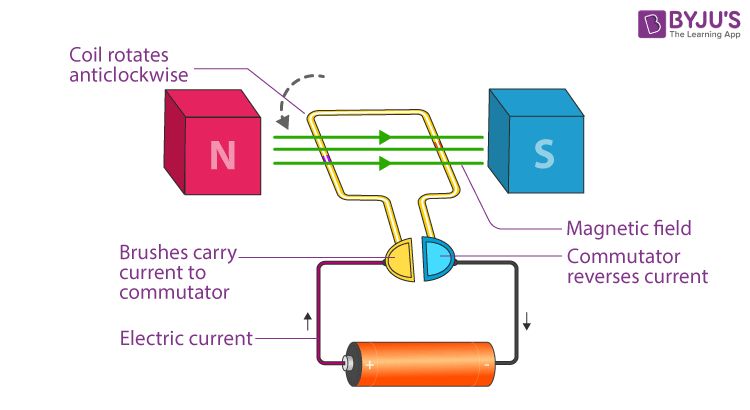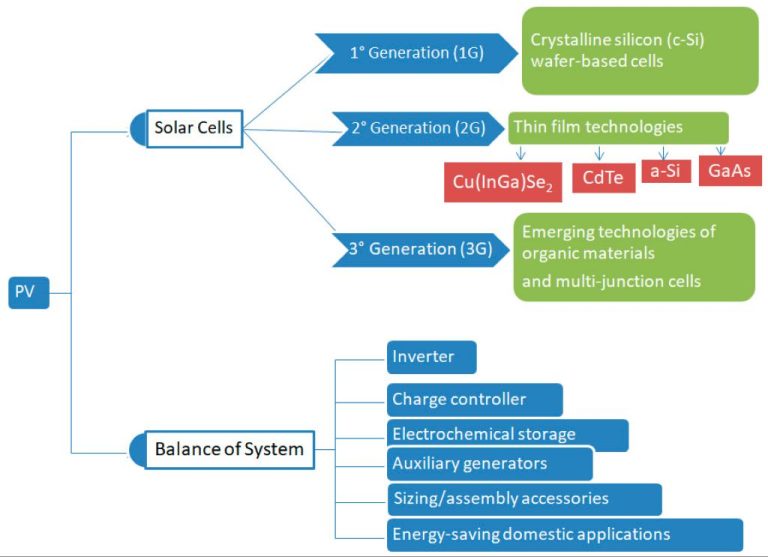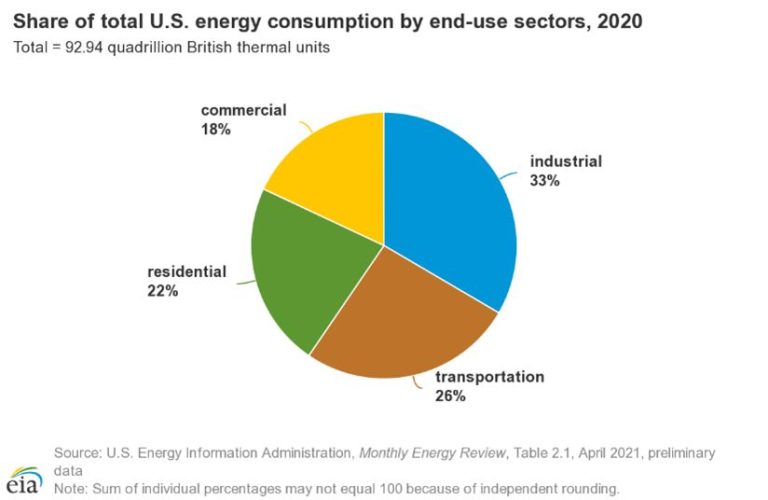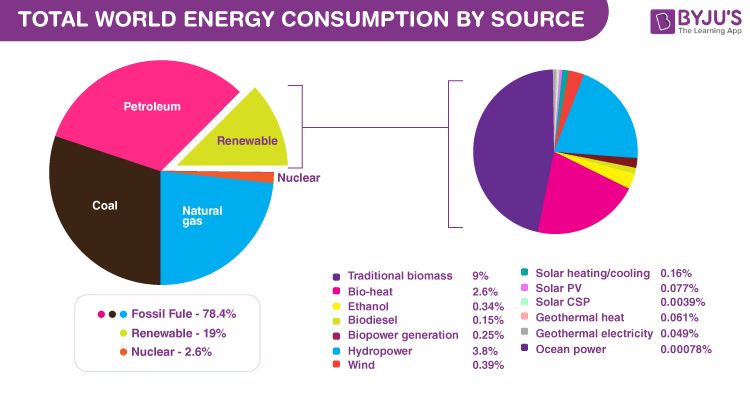How Does Electrical Energy Move?
Electricity is a form of energy that results from the existence of charged particles like electrons or protons. Electrical energy refers to the movement of electrons. Electrons have a negative charge while protons have a positive charge. Unlike charges attract while like charges repel. This interaction of charges is the basis for electrical energy and the flow of electricity.
When electrons move from one place to another, they generate electricity. This flow of electrons is called an electric current. The electric current transfers energy from one place to another, which can be harnessed to power devices and equipment. Understanding how electrical energy moves helps explain phenomena like lightning, static electricity, as well as how we utilize electricity to power the modern world.
Electrons
Electrons are tiny particles that have a negative electric charge. Atoms consist of a nucleus containing protons and neutrons, surrounded by orbiting electrons. The number of protons in an atom determines its identity as a particular element, while the number of electrons determines its electric charge. Atoms are overall neutral in charge because they contain an equal number of positive protons and negative electrons. However, electrons can become separated from their atoms, creating free electrons that are able to move between atoms.
The flow of these free electrons in a material produces an electric current. Metals tend to readily give up electrons, making them good conductors of electricity. Materials that hold tightly onto their electrons are insulators. So the movement of free electrons is the basis for electrical conductivity. When electrons build up in one place more than another, it creates a difference in electric potential or voltage. This voltage can then push electrons through a conducting material, creating an electric current.
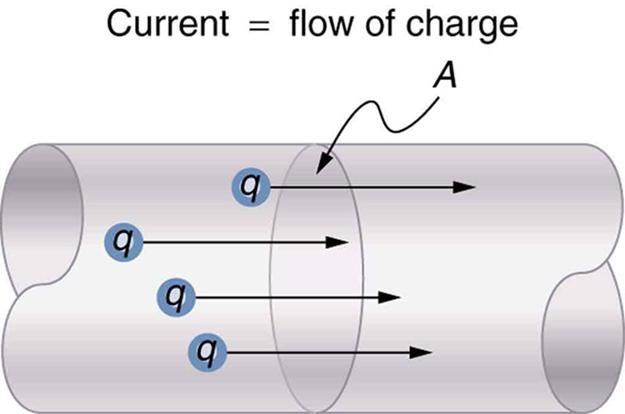
Electric Current
Electric current is the flow of electric charge carriers, usually electrons, inside an electrical conductor. It is measured using a unit called the ampere. Electrons inside metals and certain other materials can move freely from atom to atom. When an electrical potential difference is applied across a conductor, the electrons will be forced to move through it in one direction.
Each electron carries a negative charge, so when they move through a conductor, they create a net flow of electric charge. This net flow of charge is known as an electric current. The strength of the current depends on the number of electrons flowing per second. More electrons moving means a larger electric current.
In metals like copper, many electrons are free to move between atoms. So metals tend to be very good electrical conductors. In insulators like glass, the electrons are not free to move and are tightly bound to their atoms. This makes it very hard for electric current to flow through insulators.
The direction of electric current is by convention the direction that positive charge would flow. Since electrons have a negative charge, their direction of flow is opposite to the electric current. So electrons themselves actually drift slowly in the opposite direction to the electric current flow.
Conductors and Insulators
Electricity flows easily through some materials, called conductors, but not as easily through other materials, called insulators. Metals like copper and aluminum are good electrical conductors. Their atoms readily give up electrons, allowing electric current to flow through them. Insulator materials like glass, porcelain, plastic, and rubber do not readily give up electrons, so electricity does not flow through them easily.
Conductors have free electrons that can move about within the material. When an electrical voltage is applied, these free electrons flow as electric current. Metals are commonly used as conductors because many of their atoms readily give up valence electrons. Insulators have tightly bound electrons that do not flow freely. Their atoms hold on to their electrons and do not readily give them up. This makes it very hard for electric current to flow through an insulator.
Good conductors are used to make wires, electrical connections, and other components that transport electricity. Insulators are used to coat conductors and prevent electric current from flowing where it’s not wanted. Rubber covers on electrical cords provide insulation to prevent shocks. Ceramic insulators hold up power lines. Electronics use printed circuit boards made of fiberglass laminate for an insulating base. Together conductors and insulators control the safe flow of electricity.
Voltage
Voltage is the difference in electric potential between two points in a circuit. It measures the “push” or “pressure” that causes electrons to move through a conductor. Voltage is what enables current to flow and is measured in volts.
Electric potential energy results from the separation of positive and negative charges. When there is a voltage difference between two points, it creates an electric field that exerts force on electrons, causing them to move from higher voltage to lower voltage. Greater voltage differences result in a larger electric field and greater electron flow.
The flow of electrons between points of different voltage provides a means of transferring electric energy. This transfer of energy is what allows electricity to perform useful work. Voltage is essential in components like motors and lightbulbs that convert electrical energy into motion, heat, or light. Voltage must be high enough to overcome the resistance in these components and drive current through them.
In summary, voltage is the driving force that makes current flow through a circuit, enabling the transfer of electrical power to do work. The higher the voltage, the more “pressure” pushing electrons through a conductor. Voltage and current work hand in hand to deliver electricity.
Resistance
Resistance describes the amount of opposition an electrical current faces as it flows through various materials and components. All materials have some level of resistance to the passage of electrical energy, measured in units called ohms (Ω). Some materials have higher resistance while others have lower resistance, depending on their atomic composition and other properties.
Resistance has an important effect on electricity. As more resistance is added to a circuit, less electric current can flow through it. Resistance converts the electrical energy into heat energy and light energy. The higher the resistance, the more the electrical energy is converted into other forms of energy. Essentially, resistance limits and opposes how easily electrical charges can move through a circuit.
The resistance of a component depends on factors like its size, length, cross-sectional area, and material composition. Long and thin wires have more resistance than short and thick wires. Metal materials like copper and silver have very low resistance, while insulators like rubber and glass have extremely high resistance. Resistance can be calculated using Ohm’s law, which relates the current (I), voltage (V), and resistance (R) in an electrical circuit.
Circuits
A circuit is a closed loop that allows electrical current to flow from the power source to the load and back to the source. For electricity to flow, a circuit must be complete with no gaps. The basic parts of an electrical circuit include:
- Power source – Supplies electrical energy, such as a battery or generator.
- Load – Device where electrical energy is transformed into another form, like light, heat, motion.
- Conducting path – Wires or transmission lines that provide a path for electrons to flow.
- Control devices – Components that regulate the flow of electrons, like switches and fuses.
When a circuit is closed, electrons can flow uninterrupted from the negative terminal of the power source through the load and back to the positive terminal. Opening a circuit breaks the conducting path, stopping the flow of electrons. Household circuits have multiple loads connected in parallel paths from the same power source.
The path electricity takes is governed by Ohm’s Law, which states that current is equal to voltage divided by resistance. Electricity will follow the path of least resistance. Understanding circuits allows electrical systems to be designed to safely deliver power to various loads.
AC and DC Current
Electricity comes in two forms: alternating current (AC) and direct current (DC). They have important differences:
Alternating current (AC) – The flow of electric charge periodically reverses direction. The current alternates back and forth within a circuit. For example, wall outlets in most homes provide 120-volt, 60 Hz AC power. The standard AC power used worldwide alternates direction 60 times per second (60 Hz).
Direct current (DC) – The flow of electric charge is only in one direction. Batteries provide DC power as do solar panels. Most electronic devices require DC power, so AC from wall outlets needs to be converted to DC internally before use. DC power tends to be more stable and constant compared to alternating current.
In summary, AC current changes direction periodically where DC current flows in one constant direction. Both are used for different applications. AC allows easy voltage conversion with transformers and is efficient for high voltage transmission over long distances. Low voltage DC is ideal for electronics and doesn’t require conversion.
Transmission
Electricity is transmitted from power plants to homes and businesses through transmission and distribution lines. Transmission lines carry electricity at high voltages, typically 115 Kilovolts (kV) to 765 kV, over long distances. The three-phase alternating current (AC) electricity produced at power plants is stepped up to these high voltages by transformers to minimize energy losses over long transmission distances.
The transmission grid connects power plants and substations using high voltage transmission lines. Most transmission lines use aluminum conductor steel reinforced (ACSR) cable. Aluminum is a good conductor and cheaper than copper. The steel provides strength to support the weight of the conductors. Insulators are used to prevent energized conductors from contacting each other or the steel tower structures.
As transmission lines approach communities, the voltage is stepped down at substations to safer distribution voltages, such as 12 kV. Distribution lines carry this lower voltage electricity to neighborhoods. Transformers at utility poles further step down the distribution voltage to 120/240 V for use by homes and businesses. Electricity makes its final journey from the pole to buildings over service drop wires.
Conclusion
In conclusion, electrical energy moves due to the flow of electrons. Electrons naturally flow from areas of negative charge to areas of positive charge, creating an electric current. This current flows easily through conductive materials like metals, but not as easily through insulators like plastic or rubber. The force driving the electrons is called voltage, while resistance opposes the flow. Voltage, current and resistance are all related through Ohm’s Law. Electricity flows in closed loops called circuits, which may direct current in just one direction (DC) or alternate it rapidly (AC). Most large-scale transmission of electricity uses high-voltage AC current through power lines. In summary, the motion of tiny particles called electrons drives all electrical energy thanks to the forces of voltage, current and resistance.

